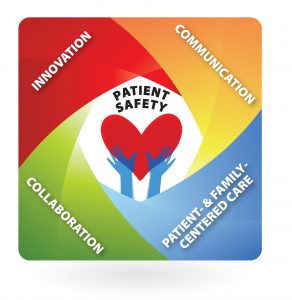Clinicians need to relinquish insistence on professional autonomy and allow the standardisation of healthcare technology and equipment in the interests of patient safety, Dr George Findlay.

At a recent meeting of the All-Party Parliamentary Group on Patient Safety discussion focussed on improving patient safety through improvements in the process of healthcare procurement. Understandably, a considerable amount of attention was given to the technical aspects of procurement that could lead to cost efficiencies and therefore increased real spending in healthcare. However, it is also important to examine the role of the clinician in the process of procurement of healthcare technologies, as this may be a significant obstacle to optimum patient safety.
Variation in the delivery of care is often the first step towards avoidable error. If, for example, a particular department of orthopaedic surgery has five consultants who each perform the same operation with different instruments to each other, use a different type of prosthesis, use different materials for suturing and have different care pathways for the postoperative management of the patient, it is not difficult to see that there is enormous scope for error and adverse events. This was discussed in an article on patient safety published earlier this year which details five system barriers to ultrasafe healthcare1. Two of these barriers are pertinent to the issue of healthcare procurement and patient safety: the abandonment of professional autonomy and transition from the mindset of craftsman to that of equivalent actor.
The hypothetical orthopaedic department would say there was no good evidence that any one of the five approaches used was significantly worse or better than the other, and each surgeon would point to results that were comparable to those of their colleagues. Differences would be tolerated by the institution as a result of surgeons’ professional autonomy. But the same professional autonomy will create a rich environment for confusion and adverse events and is likely to be inefficient in financial terms because of the need to procure small amounts of different equipment.
A much safer environment could be created by the abandonment of professional autonomy and acceptance that standardisation could lead to better patient outcomes. This is not to say that any one approach is superior to the other but that there are big benefits to be realised through avoidance of adverse events as a result of standardisation.
With the transition from mindset of craftsman to that of equivalent actor, each equivalent member of the team should be considered interchangeable and able to perform the tasks of their colleagues. This is rarely possible at the moment because of the importance individual clinicians place on professional autonomy and their unwillingness to accept standardisation.
What does this mean for procurement and use of health technologies? Firstly the principle of standardisation should take precedence over professional autonomy. The role of individual clinicians as the final arbitrator of what monitors, tools and disposable items they use should be phased out and replaced by decisions based on larger clinical care groups. There would also be potential financial benefits from the improved purchasing power that such a move would bring.
A second consequence is that the adoption of new medical technologies should move from the current ad hoc approach to a more formal method that includes assessment of the impact of the change on patient benefit and adverse events. With an understanding of the factors that contribute to the risk of adverse events, it should no longer be acceptable to allow clinicians to make unilateral and individual decisions about changes in practice.
But not all healthcare technologies bring benefit. For example, a recent report by the National Confidential Enquiry into Patient Outcome and Death (NCEPOD) An Acute Problem? noted that the observation of respiratory rates was infrequent2. Respiratory rate monitoring is simple, cheap and is an early and sensitive indicator of developing illness. It appears that one of the reasons for this reduction is the use of monitors to record oxygen saturation by pulse oximetry. Such monitors provide different information from respiratory rate observation, are expensive and have not been shown to lead to earlier detection of developing illness in hospital wards. In fact the widespread adoption of pulse oximetry may have actually caused adverse events due to delayed recognition of developing illness.
Clinicians are motivated by providing better care and any changes they introduce have this aim in mind. However, few clinicians consider the impact of variation in practice and professional autonomy as factors likely to lead to poorer outcomes. Certainly, there needs to be much more central control over the procurement and use of medical technologies. The role of clinicians should be to embrace the changes that will improve patient safety, rather than stand behind the arguments of professional autonomy and the art of medicine to justify the wide variations in practice that currently exist.
